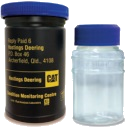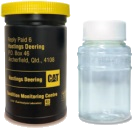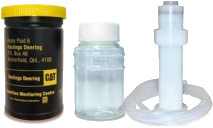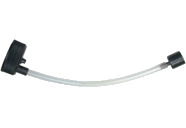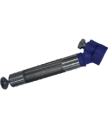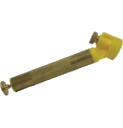Coolant Analysis
To meet the rigorous demands of the modern, heavy duty diesel engine, the cooling system must be maintained as diligently as any other mechanical component of the machine. Modern diesel engine coolants such as Caterpillar's Extended Life Coolant (ELC) is designed to have a long service life and require little maintenance invtervention. However regular laboratory monitoring is essential for early detection of cooling system problems and to ensure that the best possible service life of expensive coolants and cooling systems are achieved.

Elemental Analysis
Elemental analysis on coolant samples is performed using a spectrometer, similar to how this is done for oil analysis.
This type of analysis is used to detect the presence of corrosion metals and the amount of additive still present in the coolant. Water hardness is also determined using this test.
Elements typically identified through Elemental analysis are aluminium, boron, calcium, copper, iron, lead, magnesium, molybdenum, phosphorus, potassium, silicon, sodium, sulfate, tin and zinc.
Electrical Conductivity
This is a measure of the coolant's ability to transfer an electrical charge. This in turn gives an indication of the total dissolved solids contained in the sample. The amount of Glycol in the sample will have a suppression effect on the conductivity value.
The concentration (or dilution) of the coolant can also be inferred from the conductivity.
Hydrogen Ion Conc.
Hydrogen ion concentration, or pH value is a measure of the acidity of the coolant. Water, with a pH of 7 indicates that it is neutral with regards to acidity. Low values for pH indicate high acidity and high values correspond to alkalinity.
Because modern coolants are a mixture of water, glycol and anti-corrosion additives, normal values for pH will depend on the brand and type of coolant and the additives present, however most have a normal pH in a range spanning 7.5 to 10.
Caterpillar's Extended Life Coolant (ELC) is designed to have a long service life.
Glycol
Ethylene or propylene glycol is an ingredient of most engine coolants.
Glycol solutions provide three major benefits: - They increase the boiling point of the coolant, suppress the freezing point and reduce the ability of the coolant to cause corrosion by suppressing the ionic character of the fluid. Pre-mixed coolants are generally formulated with a 50/50 water/glycol mix although other proportions are used for specific circumstances. For example in extremely cold conditions, a 40/60 formula may be used to extend the freezing point protection. Adding more than 60% glycol is counter-productive as the freezing point of the solutiion begins to rise again and the heat transfer properties are compromised. Even where the ambient temperature never drops below freezing, the anti-boil properties of the glycol mix help prevent cavitation erosion in lower pressure areas of the cooling system such as thermostats and water pump inlet.
Glycol content of coolants can be measured directly but the methods required are time-consuming and costly. The most common technique is to use a refractometer (manual or digital) to measure the refractive index of the coolant and convert the measurement into freezing point depression or directly to glycol %. Separate scales are required for propylene and ethylene glycol as their refractive indices are slightly different.
Ion Chromatography
Ion chromatography will determine the levels of Nitrate (NO3), Nitrite (NO2), Chloride (CL-) and Glycolate (GLO) in the coolant sample. Base values for these can vary across different brands of coolants.
Additional Testing
Additional tests can also be performed on coolant samples. Currently our laboratory will include tests for density and reserve alkalinity on specially purchased sample kits.
